Tech Meetup Innsbruck Engineering Kiosk Alps
Meetup Innsbruck
Talks Archive






A quick overview of our past meetups.
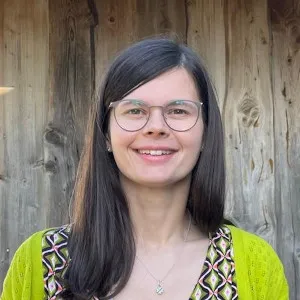
The classical computer has drastically changed our everyday personal and professional lives by utilising only the consequences of collective quantum mechanical properties (from an eagle's perspective). The concept of quantum computation and communication, on the other hand, is based on the properties of quantum particles for direct information processing. In this talk, we delve into foundational principles of quantum particles, superposition and entanglement, which redefine classical notions of computation and information. After understanding the key properties of quantum particles, we look at promising algorithms and communication protocols.
Julia is a theoretical physicist specializing in quantum networks and quantum communication. Her research focuses on the development of quantum network protocols tailored to the unique features and challenges, particularly noise and interaction with the environment, arising from quantum states. Apart from physics, she has a keen interest in classical information technology since her youth.
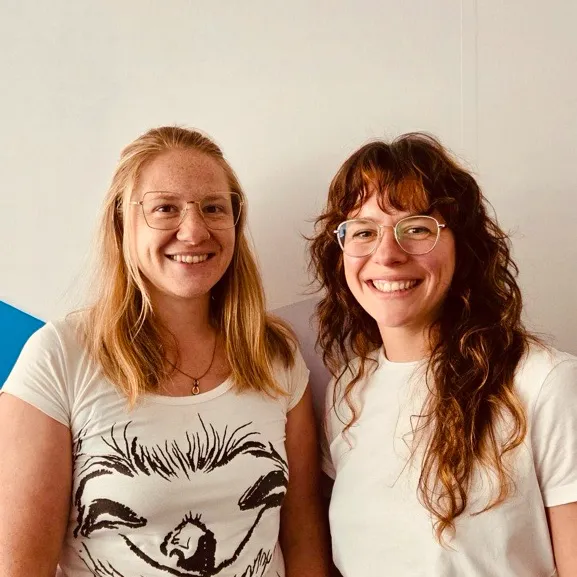
Let's face it - requirements engineering is often as clear as a Monday morning without coffee. But what if we told you that mapping your morning routine could hold the key to unlocking better communication and collaboration? In this talk, we’ll turn cereal spills and snooze alarms into a Story Mapping extravaganza, explore awesome ways to see from your stakeholders' perspectives and share the secret sauce of asking the right questions like a pro. Whether you’re here for the methods or just the live demo drama (spoiler: questions will be asked, minds will be blown), this is your chance to level up your requirements engineering & communication game without falling asleep.
Annika is an IT project manager passionate about empowering individuals and teams to achieve their best. She combines customer-centric thinking, clear communication, and curiosity to deliver impactful solutions whilst being a team player. Annika draws energy from outdoor sports, especially climbing and dedicates time to supporting migrants learning German, fostering connection and growth both professionally and personally. Verena is a sports enthusiast – where team spirit, endurance, and quick decision-making are part of everyday life. That same energy fuels her work in IT project management. With a background in Economy, Data Science and the training to be a psychosocial counselor (under supervision), she also learned that sometimes the toughest bugs aren’t in the code, but in communication. She moves between tech and business like a translator, bridge-builder – or, let’s be honest – a kindergarten teacher with a Gantt-chart. Great projects don’t just need structure and data, but also empathy, clarity, and the ability to laugh in the face of chaos (preferably with good coffee in hand).
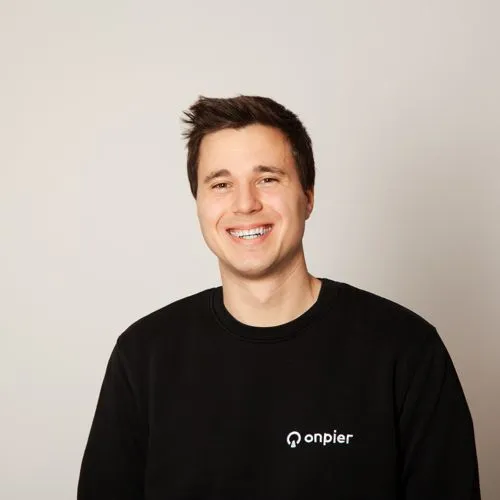
Managing a remote team can feel like conducting an orchestra over Microsoft Teams, but it doesn’t have to be chaotic. This talk explores the art of remote leadership, addressing challenges like communication and maintaining motivation, and offering strategies to keep teams connected. With real-world insights and practical tips, you’ll learn how to foster a strong team culture, even from afar. Whether you’re new to remote management or a seasoned pro, you’ll gain actionable advice to turn your team into a well-oiled machine.
Martin is a seasoned professional with over a decade of experience in the Java ecosystem. He holds a Master’s degree in Applied Informatics from Faculty of Informatics and Statistics on the University of Economics, Prague and has worked in diverse teams across the Czech Republic, Germany, and Austria. Martin began his career in 2012, honing his skills in Java development and architecture design. For the past three years, he has been a Team Lead at onpier GmbH, where he manages a fully remote team and oversees the architecture and development of platform microservices.
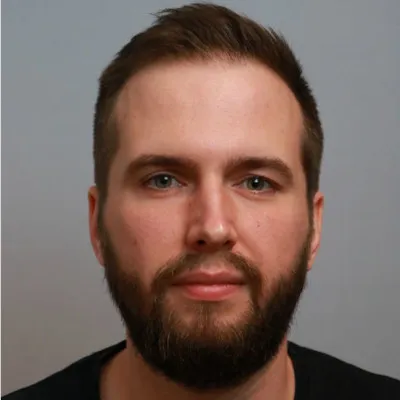
Building and operating an application for a single customer is relatively easy. But how do you handle thousands of them? In this talk we’ll discuss the fundamentals of multi-tenant Software-as-a-Service (SaaS) architectures. We’ll explore tenant identity, isolation models and how to securely share infrastucture components such as databases or message queues between them. Lastly, we‘ll discuss advanced techniques such as shuffle-sharding and cell-based architectures to improve resiliency.
Maximilian Schellhorn works as a Senior Solutions Architect at Amazon Web Services. He supports companies with designing well-architected applications and running them in the cloud. Before that he worked for more than 10 years as a Software Engineer & Architect on distributed system design and monolith-to-microservice transformations. His recent work focuses on Serverless (Java), SaaS and Event Driven Architectures.

Want to make better products without guessing what users need? In this talk, I will show you how gathering real user feedback can seriously level up your development process. We’ll chat about what ‚research‘ means, why research matters, how you can easily start doing it yourself, and why usability testing my favorite method. Perfect for anyone who’s curious about making tech that’s actually user-friendly.
Michaela is a UX Researcher and UX Concepter at a digital design agency, with over four years of experience. While she loves crafting UX concepts for web, app, and embedded interfaces in Figma, what really drives her is getting away from the desk and talking to real user.
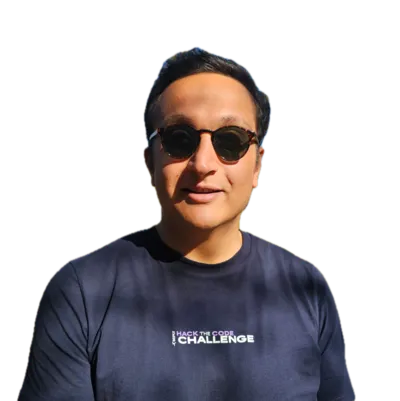
This talk is a fast-paced, practical dive into building with large language models — not just talking to them, but actually developing with them. We’ll explore how to use LangChain and LangGraph to build intelligent tools that do "stuff". You’ll see: When to use LangChain vs LangGraph (and when to just write a for-loop). A live walkthrough of building a content-generation tool that works (maybe 🤞). A showcase of a test automation assistant that turns “click & scroll” into “code & execute”. If you’re thinking of putting an LLM in your stack — this is your crash course. (Note: This abstract may have been partially AI-generated. Or not. Who can say anymore?)
Nazmi make things you can click — or have a conversation with. He has done 3 years of mobile development and spent some memorable time with machine learning and VR. And also played around with whatever looked interesting — Ktor, Spring, PrimeFaces, Vue, Tailwind, WordPress, Astro, Eleventy, ROS, ... etc. In short: Nazmi is into building stuff — sometimes serious, sometimes ridiculous, but always fun.
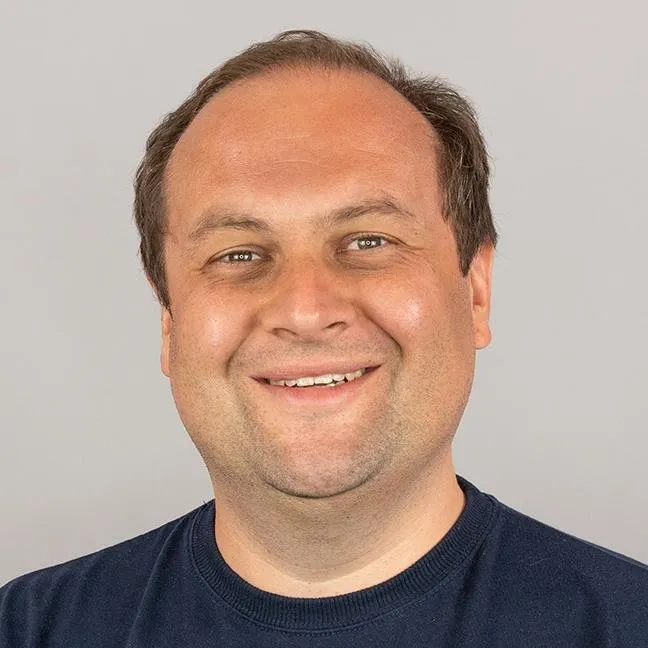
For many, moving from proprietary software to open source feels like being thrown at the deep end. In the talk we will demonstrate how we moved with our VoiP platform from proprietary Cisco components to an Asterisk and Kubernetes based solution. We will showcase an excerpt of the used technologies and highlight their advantages and disadvantages for our needs. We will wrap up the talk by pointing out how open source has also benefited our marketing efforts.
Throughout my academic career, I completed a PhD in computer science with a focus in Software Quality Management at the University of Innsbruck. After a decade of working as a software engineer, architect or team lead, I am now the Head of Technology Unified Communications at World-Direct eBusiness solutions GmbH
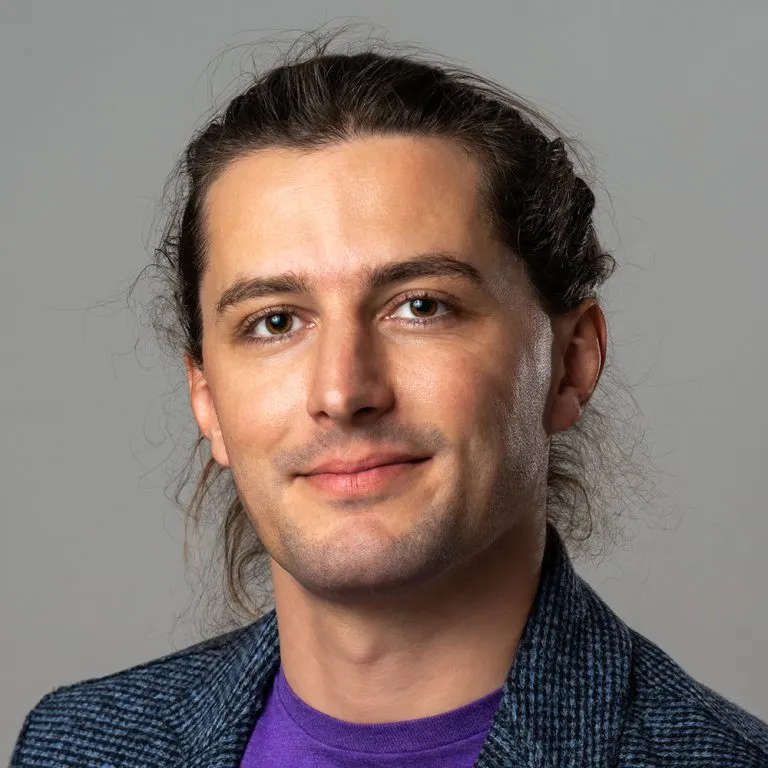
With a focus on the ☀️-side, this talk will elaborate where our digital world is quasi-utopian already, in which corners we are on the right track and what needs to be done to finish the job.
Digital policy advisor for people who (mostly) didn't ask for it. Two decades experience in discussing Privacy, Surveilance, Digital Sovereignty, Decentralisation, Free Software, Open Data and power structures in tech and elsewhere.
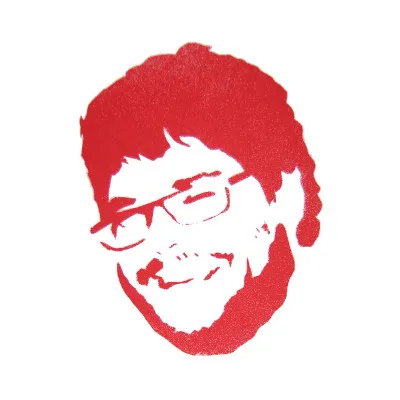
The Zephyr Project, an open-source real-time operating system backed by The Linux Foundation, has spent nearly a decade evolving into a stable, reliable technology. With its liberal Apache 2.0 license and community-driven development, Zephyr has gained traction among both individual developers and companies alike. But what truly sets it apart are the technical details. This talk will inevitably touch on the frustrations of dealing with vendor-specific IDEs, while providing a brief dive into key aspects like the Hardware Abstraction Layer (HAL), Kconfig, and west. Ultimately, it will explore how Zephyr is helping embedded software finally break free from the stone age.
Roland Lezuo has studied technical computer science in Vienna where he focused on disturbingly deep details of Java Virtual Machines. Though his PhD thesis on compiler correctness is all about precision and formality, he prefers to keep life more relaxed. Outside of work, he's a busy dad of three, and has successfully founded an embedded software company, which he later merged with an electronics firm. Today, he's the CEO of SILA Embedded Solutions, leading the charge with a passion for innovation and a hands-on approach.
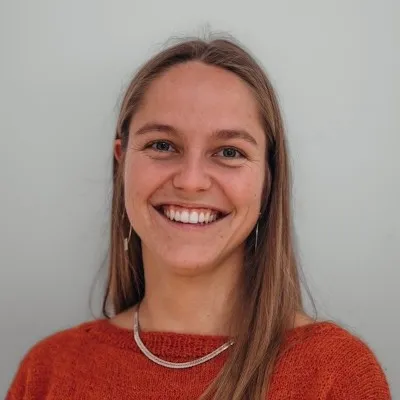
People with disabilities often face discrimination and lack of access in all areas of society. While cheap and accessible assistive technologies can support participation and independence, awareness and acceptance of disability are inevitable for an inclusive society. Our initiative INNklusion strives to tackle these problems by bringing together people with disabilities, students, researchers, and associations. During different lecture formats at the university, students co-design assistive technologies with people with disabilities. You will learn about interesting projects such as a public transportation navigator and a make-up robot as well as lessons learnt after one year in practice and our vision for a more inclusive region.
Currently, Katharina is doing her PhD in wearable robotics at the University of Innsbruck. Since her Master's she is working on different assistive technologies, such as a hand exoskeleton for people with limited hand mobility. Together with her colleagues, she founded Innklusion because building technologies is cool, but contributing to a more inclusive and respectful society makes it even more exciting.
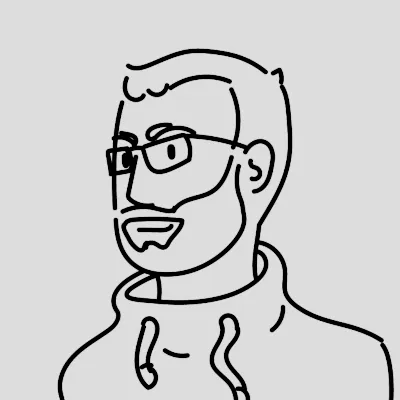
Android's Full Disk Encryption (FDE) is a feature designed to protect user data, but what happens when your device stops working and you need to recover your encrypted data on it? Join David as he delves into the depths of Android's Full Disk Encryption code in his quest to recover lost encryption keys.
David Gstir is a security researcher and software engineer at sigma star gmbh with 15+ years of hands-on experience in designing, engineering and auditing software for various use cases. He obtained a master's degree in computer sciences from the University of Technology Graz, Austria where he specialized in IT security and cryptography.
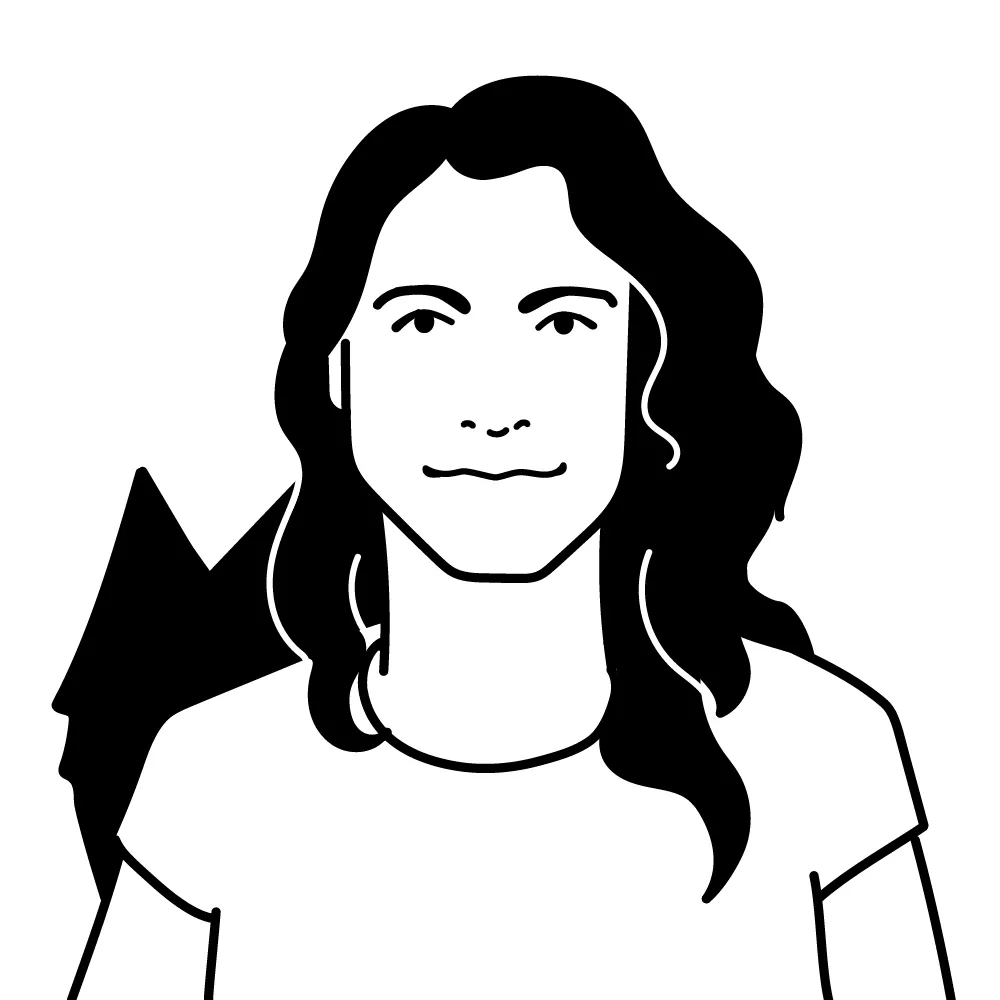
“Die Romana zaubert uns da schon was.” (“Romana will conjure up something for us.”) This phrase always irks me. People outside the creative field often think graphic design and illustration are some form of magic. Well, it isn’t—not like in Harry Potter, where a wave of a wand (or stylus pen) and a few words create something from nothing. But what if we redefine magic? In this talk, I’ll explore how graphic design can indeed be magic, discussing the conditions that make it so and the processes involved
From a young age, I was always drawing. This childhood passion led me to study Graphics and Communication Design at the HTL in Innsbruck. Frustrated by the subjective "I don’t like it" feedback in design, I dabbled in studying computer science while working in sports retail, driven by my love for the outdoors and aversion to endless screen time. Throughout this period, I freelanced on the side for friends and acquaintances. For the past seven years, I’ve been an all-around designer and illustrator in a corporate setting.
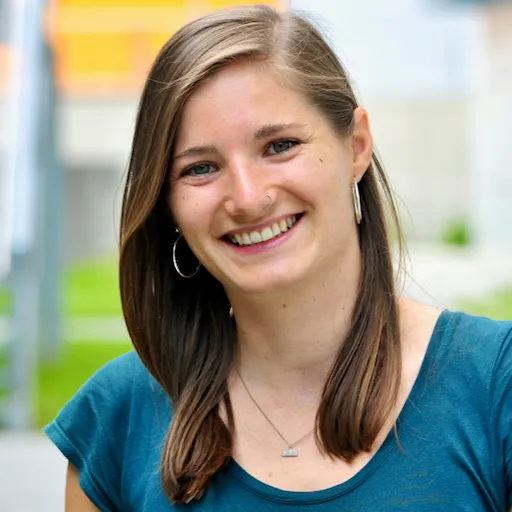
Digital images are integral to society, shaping public opinion in media, providing evidence in science, and influencing decisions in police investigations and courtrooms. However, most of these images are not preserved in their original form but are compressed to save storage and enable efficient transmission. Modern learning-based compression algorithms use neural networks to achieve unprecedented compression rates while maintaining high perceptual quality. However, these algorithms may replace difficult-to-compress image data with synthetic approximations, potentially altering the image’s semantic meaning. Given the seemingly high quality, compressed images appear plausible, and people are tempted to trust them.
Nora Hofer is a Ph.D. student at the Security and Privacy Lab at the University of Innsbruck. Her research focuses on understanding and mitigating semantic changes introduced by learning-based image compression algorithms. In this talk, she will briefly introduce neural image compression, show examples of semantic changes, and discuss recent work towards mitigation strategies.
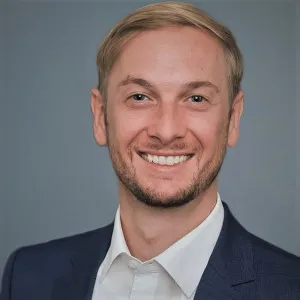
For embedded systems, robust firmware over-the-air (OTA) updates are essential. They ensure data protection, update integrity, and fast recovery from failures or attacks. As connected devices grow, fail-safe OTA updates are increasingly critical to prevent unauthorized access and system disruptions. Thomas will give a brief overview of the basic principles and some of the challenges.
Thomas is an alumni of the University of Innsbruck with more than 15 years of experience in IoT in various industries. He started his career at General Electrics Healthcare as a C++ developer in the field of X-ray machine connectivity. His interest in the connectivity topic brought him to a measurement device manufacturer, which he led as General Manager for the last 4 years, before moving to a Munich based IoT consulting company called Concept Reply GmbH, where he is currently responsible for the Embedded Development department as Senior Manager.

Let’s face it getting technical and non-technical people to work seamlessly together can feel like herding cats, but it doesn’t have to be that way. Drawing from years of navigating the chaotic but rewarding world of product management (and yes, babysitting engineers), this talk dives into the art of bridging the gap between “geeks” and “non-geeks” in tech. We’ll explore real-world strategies for fostering better collaboration, sprinkled with humor, a dash of personal experience, and one guiding principle: being decent human beings goes a long way. Whether you’re the tech wizard or the big-picture dreamer, you’ll walk away with practical tips and maybe even a few laughs. Let’s turn the “us vs. them” dynamic into a team win. Ready to dive in? Let’s do this!
I didn’t plan to become a product manager. If you’d told me about product management five years ago, I probably would’ve smiled and nodded like I knew what it was, only to Google it later. But somehow, this role found me while I was working as a UI designer for a startup. Fast forward to today, I’ve worked as a product manager at companies of all stages. And no, I’m not a project manager please stop asking. My days are a mix of babysitting software engineers, being the voice of reason to leadership teams, and occasionally pretending I have all the answers. When I’m not doing that, you’ll find me escaping reality through cooking, anime, and video games. I’m currently pursuing my master’s degree at the University of Innsbruck, diving deeper into all things tech and strategy. Today, I want to share some hard-earned lessons on building better relationships between technical and non-technical people lessons that start with one simple thing: being decent to each other.

From a nice-to-have to a valuable insight — what does it really take to turn raw data into something actionable? In this session, I will take you on a journey through the process of transforming unstructured data into clear, business-driving insights. We’ll explore how to identify client needs, gather data from diverse sources, use powerful ETL/ELT tools and visualize the outcome with PowerBI.
Theresa has a Bachelor’s degree in Management, Communication & IT from MCI Innsbruck, and a Master’s in Business Analytics & Big Data. After almost four years of analytical consulting for major Amazon advertisers, she shifted to freelancing, focusing on data analysis, consulting, and visualization. Outside of work, Theresa is an avid adventurer, spending her free time hiking/skiing in the mountains or catching waves, whether at the Eisbach in Munich or the ocean.
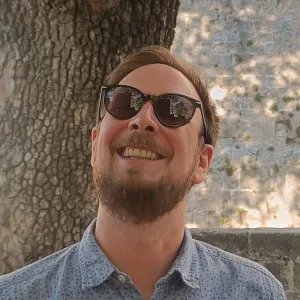
In this talk we explore our storage options for various datasets and access patterns. We'll compare performance using micro-benchmarks, profiling, and load-testing and give a quick introduction on how to do that.
Daniel worked the last couple of years rolling back software at Google. While he left SRE behind him, he still occasionally rants about the state of software release processes.
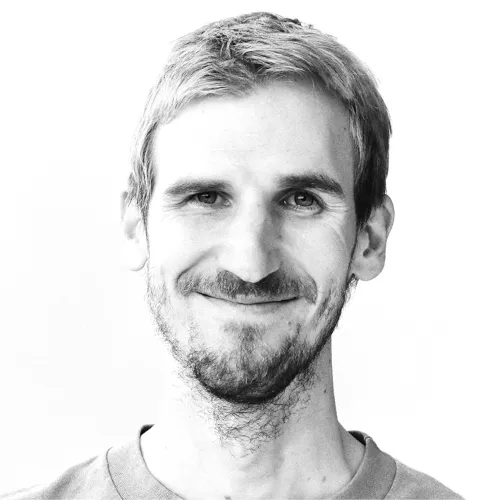
While you would think that High Performance Computing and Cloud Computing communities should understand each other well, they can often not find common ground, with both sides remarking the others don't understand, are stubborn, or don't see the bigger picture. From the outside this is hard to understand. After all, they pretty much run (for outsiders) indistinguishable data centers and their platforms promise great benefits as soon as you get a hand of things. In this talk we will try to highlight that talking to each other is more that „merely getting the word meanings right“.
Peter did his PhD in Numerical Linear Algebra and started to use High Performance Computing (HPC) early in his studies. Later in his career he co-lead a project between 8 Universities that aimed to foster cooperation of Austrian Universities on HPC and Cloud Applications with a focus on usability and reduction of the „learning curve“. This is where he gained first hand experience on the topic at hand.
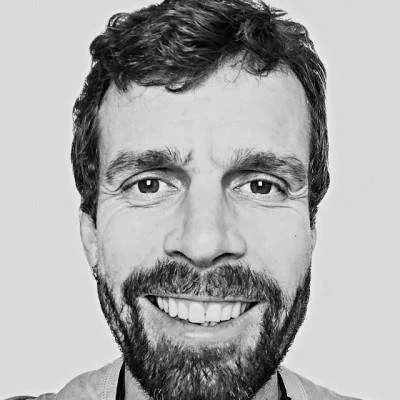
In this talk we examine our trust relationship in security protocols. We take TLS and SAML as examples and examine whether our trust is justified or if we should exercise more vigilance and caution when using and implementing security protocols. The answer is Jesus (and sometimes Bruce Schneier).
By day, Felix is a seasoned security consultant at Cancom and a network engineer with over 15 years of experience in keeping the digital world safe from threats. By night (and on weekends), he's a freelance mountain guide, scaling peaks when he's not scaling firewalls. Felix’s journey began in the idyllic classrooms of Bozen as an Admin and has since taken him to global networks with ILF Consulting Engineers, all while maintaining an academic footprint at universities in Innsbruck and Paderborn, where he earned his PhD in Network Security. Whether he's hunting down security vulnerabilities or guiding a group up a mountain, Felix always finds himself on top of things – metaphorically and literally!
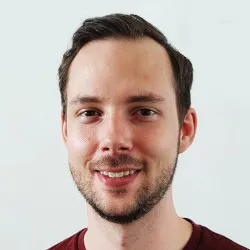
The excitement around Large Language Models (LLM) and Generative AI (GenAI) has finally reached businesses everywhere, all dealing with data in different formats and qualities. In this talk, I'll walk you through a Retrieval Augmented Generation (RAG) ChatBot project using Azure Cloud infrastructure with Confluence and Jira as data sources. We'll cover the journey from initial idea to a working minimum viable product (MVP), sharing technical challenges architectural decisions, and lessons learned along the way. This talk will balance technical details with business requirements, providing a practical overview of what it takes to build a RAG ChatBot. Join me for some insights, real-world experiences, and a few laughs as we navigate the world of GenAI together.
Rick is a Software Engineer and Architect at Cloudflight, where he provides technical leadership to both customers and team members. With a solid background in the JVM ecosystem, working extensively with Java, Kotlin, and Spring Boot, Rick has spent the last year expanding his expertise to include cloud-native application development, focusing on Generative AI solutions primarily on Azure. When he's not pushing the boundaries of technology at work, he enjoys the tranquility of the mountains.
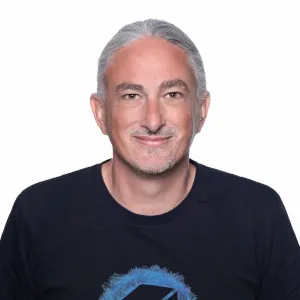
Kubernetes (K8s) streamlines deployment, scaling, and management of containerized applications. In this talk, we’ll explore the history of Kubernetes, talk about the relationship with Docker and look at some of the core concepts. Several live demos will also be presented.
Markus is a Product Architect at Dynatrace working on building an internal platform delivering Dynatrace Services into a multi-cloud, multi-tenant environment based on Kubernetes. With 25 years of experience starting as a Java Developer, followed by many years as Software Architect he is nowadays focused on CI/CD and Kubernetes.
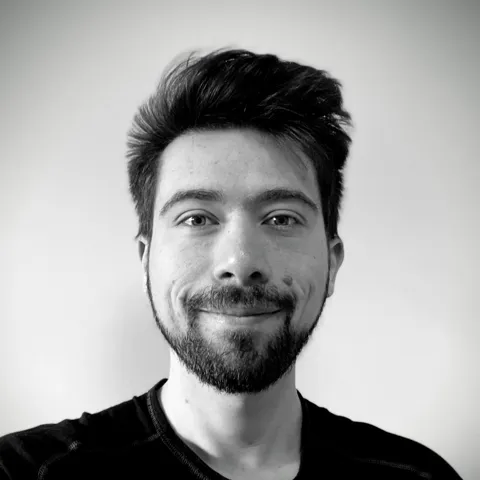
Most engineers are familiar with pair programming. Your team may already encourage it to foster learning or as an alternative to ensuring code quality via pull-request reviews. This talk will show you the impact that collaboratively creating code has on "team quality" rather than just "code quality" - creating opportunities to build trust, increase shared ownership, and define and better understand a shared vision. And if you weren’t convinced before, we’ll end with a few practical tips on getting started with pair and mob-programming.
Nico is an engineering manager at Dynatrace, working with teams building the cloud and CI/CD foundations of an internal developer platform. With a background in robotics and devops, he’s passionate about all things automation and creating software that simplifies life. Nico co-organizes agile and leadership meetups and volunteers at robotics competitions for children.

We invite you to share any tech-related topic that you're passionate about or find interesting. Whether it's a new technology, your experience with a specific tool, an idea for an open-source project, or even seeking feedback on a potential side project, we want to hear from you. In case you want to give a lightning talk, please get in touch with us via email or on site at the meetup.
Topics we discussed:
Why Bootloader Security Matters by Richard Weinberger (slides below)
Code Reviews & Nit-Picking Discussion by Nico Riedmann
Crowdstrike Group Therapy by Romedius Weiss
What is the best Linux Distro for your parents?

What would it take to have an "Undo" capability for Production? In this talk we explore how we can achieve this simple concept, and what it would mean for how we write and think about software development and deployment.
Daniel worked the last couple of years rolling back software at Google. While he left SRE behind him, he still occasionally rants about the state of software release processes.

This talk will take you on a journey of embedding AI models on the world’s first smart binocular. We look at the assumptions at the beginning of our project as well as the complexity of embedded software and the dependencies on other hardware components. We will discover the key learnings of our first prototype version and examine our current approach to meet user expectations. Besides the technical challenges when running AI models on an embedded hardware, you will get insights why in my opinion user experience plays an even more important role in AI applications than in others.
Danielle is, above all, passionate about birds. She recently joined Swarovski Optik as a Data Engineer where she gets to combine her birding expertise with her interest in machine learning. Her role consists of evaluating and improving machine learning solutions that can be deployed on smart optical devices. Stefan has been working at Swarovski Optik on embedding software into sport optical solutions for more than six years now. Currently, his focus is on building up a highly capable in-house software development team. His background is in computer science, but starting with his research on wireless communication he has been diving deeper into embedded software; from bare metal real-time programming to running AI on dedicated hardware. He is passionate about building physical devices that are enriched with software features – such as the world’s first smart binocular.

This talk will disappoint you with the fact that there is no such thing as a “standard retrospective” and that if you’re looking for reusable solutions to retrospectives, you’re trying to solve the wrong problem. We’ll dive into the importance of understanding the team and current situation, when deciding whether your next retro should be another “start/stop/continue, dot-vote, argue and forget” or a format tailored to your team’s situation.
Nico is an engineering manager at Dynatrace, working with teams building the cloud and CI/CD foundations of an internal developer platform. With a background in robotics and devops, he’s passionate about all things automation and creating software that simplifies life. Nico co-organizes agile and leadership meetups and volunteers at robotics competitions for children.
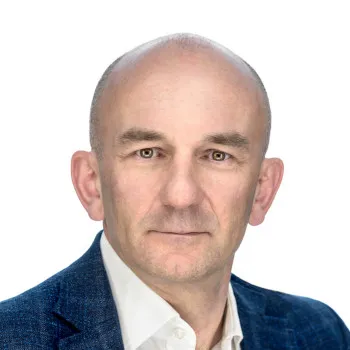
One of the hassles when writing any kind of component for the browser is how to style them, so that they fit well into the currently used design system. Currently the only approach I’m aware of, is to create one special theme for every CSS toolkit to support. This approach is time consuming and does not scale well. I therefore developed a technique to reuse the current design and apply it to any web component. This enables frontend developers to focus on the functionality of their components without having to continuously adopt their styles to the never ending stream of upcoming CSS toolkits.
Jacob Rief graduated with a master in physics from the University of Innsbruck. He then worked for many years as a software developer, system architect and consultant for different companies, before returning to his Alma Mater in 2020. There he’s in charge of evolving the main Content Management System of the university. Jacob is also an eager Open Source contributor and maintainer of a few popular third party packages around the Django ecosystem. His main focus is on Django, Python, JavaScript and web development in general.
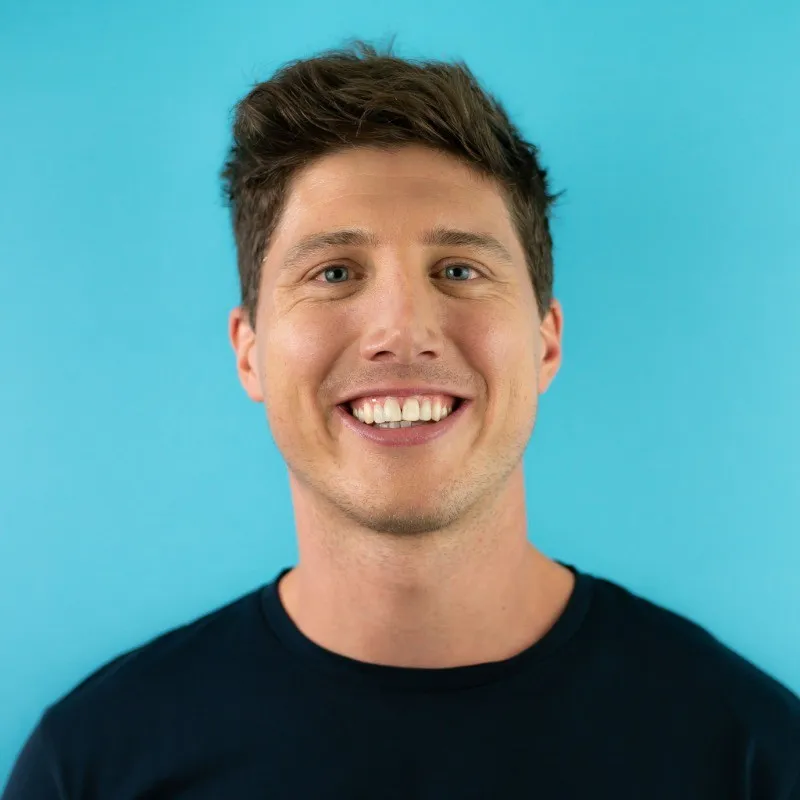
This talk examines the role of Bitcoin mining in accelerating and economizing the energy transition. We'll explore how integrating Bitcoin mining with renewable energy sources can reduce the environmental footprint of heating and make renewable energy more financially viable. The presentation will focus on the practical aspects of this integration, demonstrating how it can lead to more stable green energy grids and provide an economic boost to areas with renewable resources. Attendees will gain insights into the symbiotic relationship between bitcoin and sustainable energy, understanding how Bitcoin mining can support the transition to a greener economy.
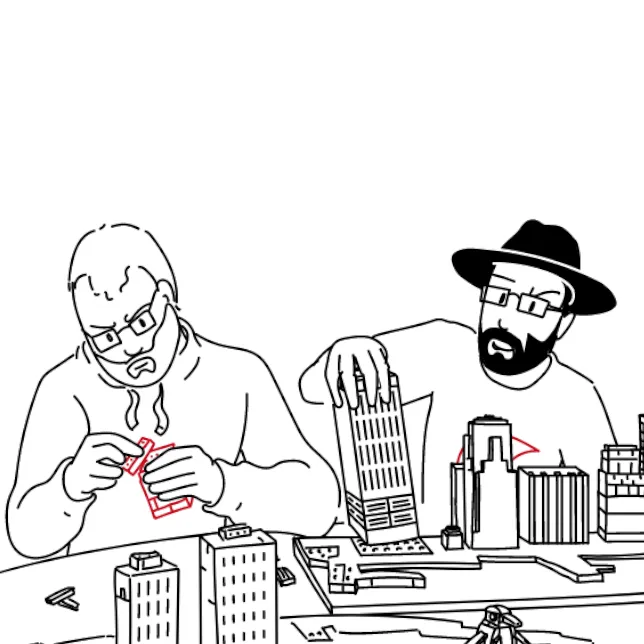
The recent discovery of a backdoor in the xz-utils package vividly demonstrates that supply chain attacks are not only a reality but also pose a significant threat. In this presentation, David and Richard will provide an overview of the attack on the open-source ecosystem and discuss supply chain attacks more broadly. The objective of this talk is to offer both a technical and a non-technical overview of the attack, offering insights that may help mitigate similar incidents in the future. Additionally, David and Richard will explore the potential impact of supply chain attacks on individuals and their software projects. This discussion aims to shed light on the broader implications of these attacks and provide guidance on safeguarding against them in an increasingly interconnected digital landscape.
David Gstir is a security researcher and software engineer at sigma star gmbh with 15+ years of hands-on experience in designing, engineering and auditing software for various use cases. He obtained a master's degree in computer sciences from the University of Technology Graz, Austria where he specialized in IT security and cryptography. Richard is co-founder of sigma star gmbh where he offers consulting services around Linux and IT security. Upstream he maintains various subsystems of the Linux kernel such as UserModeLinux and UBIFS. Beside of low level and security aspects of computers he enjoys growing lithops.
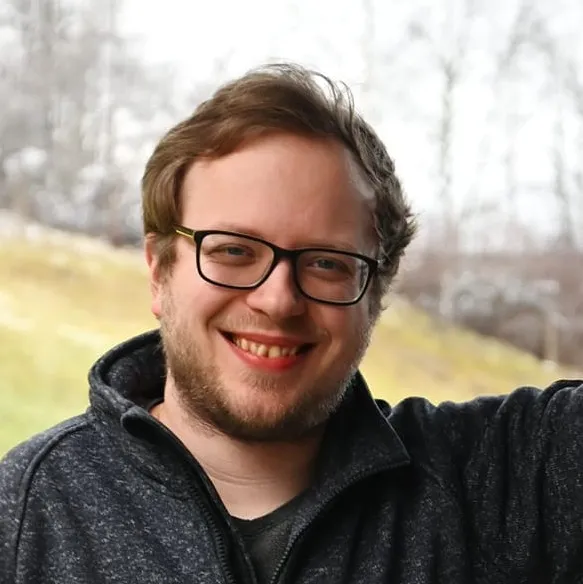
Are you fed up with Java throwing NullPointerExceptions at you in production? Did you write enough getters and setters for a whole developer lifetime? Do you wish for something better? Then this talk is for you. We'll talk about Kotlin, the programming language created by JetBrains, which has taken the world of the Java Virtual Machine by storm. From Android apps to server-side development and even build scripts, Kotlin is everywhere. The talk gives an introduction to the language and its key features as well as side-by-side comparisons with Java. Whether you're a seasoned Java veteran, or a newcomer who's just learning programming, this talk has something in store for you.
Martin studied computer science at the University of Innsbruck. While working towards his PhD, he got in touch with the founders of Txture, the startup company he's working for today as a senior backend developer and software architect. His favorite topics include Kotlin, the Java Virtual Machine and databases. Outside of his job he's a passionate gamer, from the latest blockbusters on PC and consoles to classic tabletop dungeons and dragons.
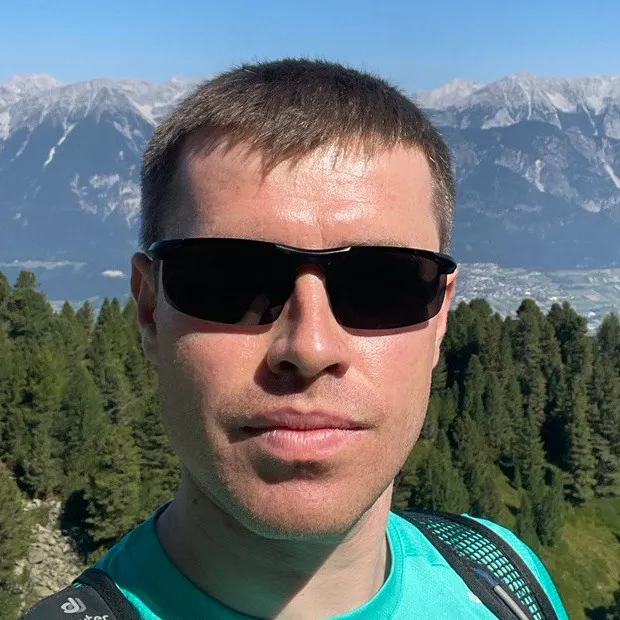
All engineers are working with tasks every day. And of course we make a decision which task should be done next. There are a lot of different ways and approaches to do it. Nowadays Agile(Scrum) methodology has become an engineering standard and prioritizing backlog is a common operation. I'm gonna talk about most usable prioritization Models. Based on my experience, I will share pros/cons of them. Also mention which can be used for roadmap planning. How we organized the roadmap planning in my current company to consider opinions from development, service and sales teams.
Hi, I’m Sergei. As a software engineer I have had more than 10 years development experience. Although I began as an intern Developer, I eventually earned a position as the Team Lead in charge of development of a high load storage system. I’ve worked on daily bases with different technologies and programming languages such as Java, Golang, C and C#. During my professional career I've experienced different Agile methodologies and SCRUM. I used to adapt the SCRUM approach to R&D team specific. I’m passionate about technologies and building software development processes.

In the evolution of cloud computing, containers have become a pivotal technology. They provide a robust way for packaging, deploying and operating applications, with Kubernetes emerging as a leading orchestrator. On the other hand, Serverless functions provide a streamlined, event-driven model that abstracts infrastructure management entirely. In this session we’ll explore the fundamental differences in architecture, scalability, and operational characteristics between these technologies. By investigating real-world scenarios and code we’ll gain insights into choosing the right approach based on workload requirements, deployment scenarios, and operations. Lastly, we’ll explore synergies between these technologies, demonstrating how they can be combined to leverage the strengths of both.
Maximilian Schellhorn works as a Senior Solutions Architect at Amazon Web Services. He supports companies with designing well-architected applications and running them in the cloud. Before that he worked for more than 10 years as a Software Engineer & Architect on distributed system design and monolith-to-microservice transformations. His recent work focuses on Serverless (Java), SaaS and Event Driven Architectures.
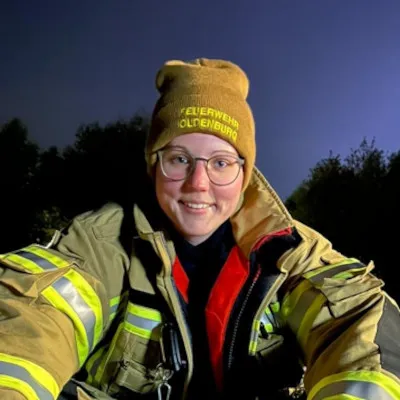
“Why are you so emotional?”, “Can’t you just put your private life aside?”, “We are at work, please be professional!” Who doesn't know sentences like these? In a world captivated by progress and achievement, mental health and well-being often find themselves relegated to the shadows or not taken seriously. Embark on a transformative journey with me, redefining mental health discussions in the workplace. Visualize a setting where mental well-being is integral, fostering genuine support. Explore the tangible benefits for both employees and management, understanding how a supportive workplace elevates individual thriving and overall organizational success. Offering examples of navigating mental health challenges at work and providing guidelines, insights, and ideas for supporting others, this talk goes beyond. Regardless of whether you encounter challenges or not, valuable tips and insights into supporting mental health issues in the workplace will be shared. The question is not, “Should we talk about mental health at work?” but rather, “How can we talk about mental health at work?” This session will offer a direct answer to that question by giving examples and guidelines out of personal experiences.
Veronika Betzel, also called Vero, started out studying to become a teacher, but ended up discovering a passion for Quality Assurance (QA) by chance. Initially working in QA part-time while studying, Vero made the switch to working full-time in QA after completing her bachelor's degree. Vero loves the diversity of her job, but what she enjoys most is the opportunity to communicate and exchange ideas with others. She values directness and open discussions both personally and professionally. Vero loves to teach others, making her presentations both informative and engaging. Starting QA in 2017 Vero has already amassed some experience in the QA field, working for two different companies. When she's not working, Vero can be found giving back to her community as a volunteer firefighter or kicking a ball around the soccer field. Whether at work or play, Vero is a communicator at heart and always looking to make a positive impact.
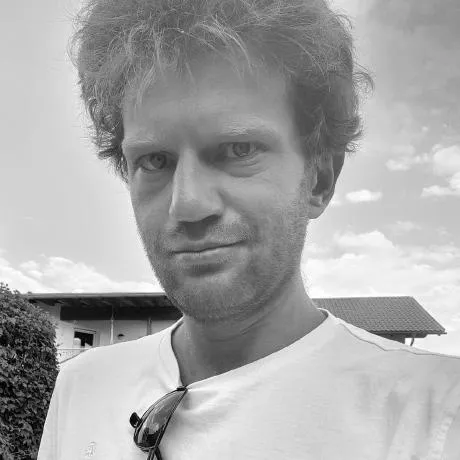
Since 1960, the Avalanche Warning Service Tyrol has been a crucial element in ensuring the safety of both winter sports enthusiasts and Alpine residents. Starting from December 2018, a joint bulletin has been published for the Euregio Tyrol–South-Tyrol–Trentino in seven languages. The entire software stack supporting this service is open source (FOSS) and undergoes continuous development on GitLab. This talk provides an in-depth look into the software powering the daily avalanche bulletin, along with the standards (EAWS, CAAML) and processes that operate behind the scenes.

Hidden Gems in Linux’s /proc File System by Richard Weinberger (slides available below)
Keep the fun alive in your company chats by Peter Kandolf
Autoscaling in Kubernetes with Custom Metrics and KEDA by Anand Raj Manickam
Avalanche Detection in Videos by David Peer
Playwright in Action by Jacob Rief
devdocs.io by Simon Legner
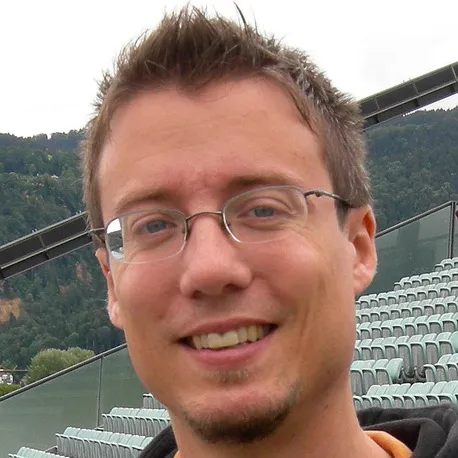
This talk explores Java code structure analysis using Graphs. It provides an introduction to Graphs and underscores their significance in both Graph Analysis and the field of Graph Data Science. The journey begins with exploring queries to analyze code dependencies and progresses to the application of graph algorithms for tasks such as community detection, centrality, and similarity. Additionally, the talk provides an introduction to node embeddings for machine learning. By the end of this presentation, software professionals will be well-equipped to extract valuable insights from Java code bases effectively.
With software engineering, I turned one of my hobbies into my profession. I started programming as a kid and am still as passionate about it as I was back then. My work life started at Allgemeines Rechenzentrum (ARZ) in Innsbruck where I worked for 22+ years on the core banking system for accounts. I started as a mainframe developer with COBOL and switched then to Java. Later, i was leading a small team with members in Vienna and Innsbruck. In Mai 2023 I joined Dynatrace where I’m now writing apps for the 3rd gen of the product mainly using TypeScript. I spend my free time with my wife and two kids, playing and making music and sometimes also contributing to open source projects or publishing my own ideas.
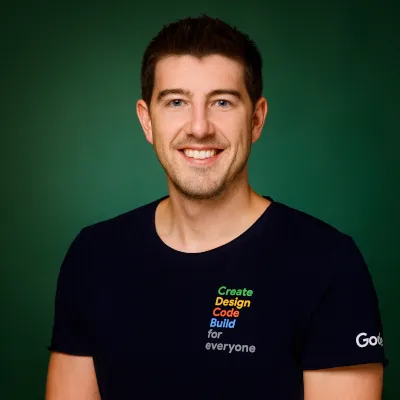
If a process is repetitive or a routine does not become a natural habit, we should automate! This applies not only to software development, but also to offline routines, such as internalizing the latest avalanche report before heading out into the snowy mountains. Automate. In this session, Christoph will provide insights into the "Avalanche Report Synthesizer" application, which automates the daily creation of a podcast-like avalanche report to make the reports more naturally accessible and audible. He will dive into this event-driven, serverless application and uncover the tools and frameworks used, from Pulumi (IaC), TypeScript serverless best practices to Speech Synthesis Markup Language (SSML).
Christoph works as a Strategic Cloud Engineer at Google and focuses on the modernization of containerized applications and the development of serverless applications. NodeJS and Typescript are his favorite tools to go fast. Prior to Google, he worked at AWS and MaibornWolff developing apps and services on various web, mobile and cloud platforms. Originally from Zirl, he enjoys being close to the ‘cloud’ during mountaineering as well.
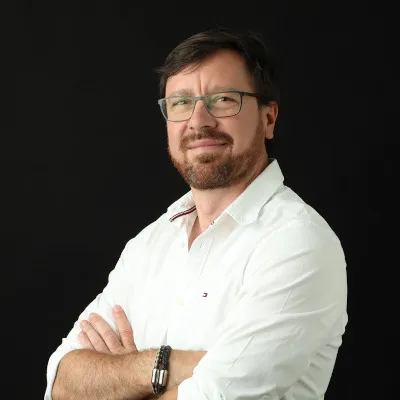
The final proposal of the European Cyber Resilience Act (CRA-E) is publicly available since September 2022 and so are the results of the EU's impact assessment of the planned regulation. Considering the potentially huge implications, especially for enterprises with less mature secure development practices, achieving compliance with the CRA-E will become a challenge once the legislation will be finally enacted. During this talk I will present an overview of the regulation's essential security requirements and how these relate to standards and best practices in secure development of software-intensive systems. I'd like to use this event to discuss your view on this upcoming regulation and will showcase interesting results from the CERTAINITY Cyber Resilience Act Preparedness Survey we conducted together with the university of Innsbruck.
As partner and founding member of CERTAINITY I’m leading our security engineering practice. I’ve been working as a security architect, business consultant and software engineer for over two decades. Currently I focus on secure software and product development, the implementation of security architectures and the establishment of associated processes - especially in areas of critical infrastructure.
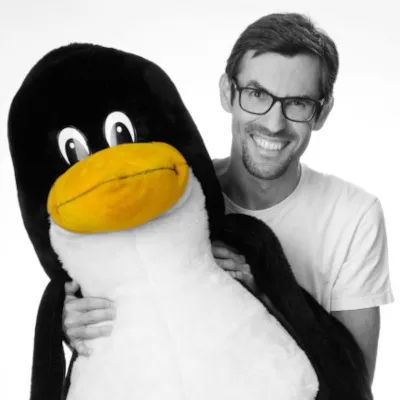
Updating software sounds easy, but it's not. It's ease in the beginning but gets harder over time because you always have to migrate the old system and configuration to the new system. The bigger your tech-stack gets the more components you'll need to update. A software appliance needs to update countless dependencies, migrate state and keep everything consistent. This talk starts with an overview of what it really means to update software and is also a collection of stories from 15 years of updating a software appliance.
Right after graduation Lukas co-founded a company that developed a software appliance for a TV playout system (digital signage) and later build two outdoor platforms which have become quite popular for several years. Ten years later Lukas joined Asteas Technologies as a software engineer because he wanted to work in a bigger team. In 2018, Lukas got the chance to lead the development team of the captive portal called IACBOX, and finally was promoted to the managing director in 2023. Lukas' tech stack usually has Linux under the hood and (too) many programming environments on top. In the past Lukas used a lot of Java/Groovy but later on more PHP, C and Perl which is now replaced with go.
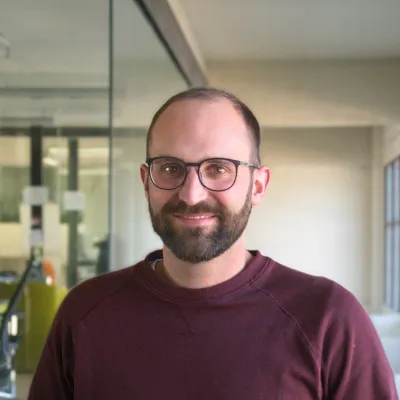
In recent years, many companies have started to document and automate their infrastructure in the cloud using infrastructure as code. However, the responsibility and execution remained part of the operations team. In this talk, I will show how you can hand over certain tasks to the developers and provide them full transparency, but without neglecting the topic of security. We will talk about tools like Terraform, Atlantis, 1Password Connect and many more.
Software Developer and Co-Founder of AboutBits
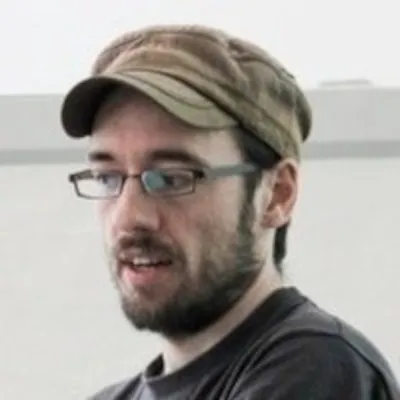
Open Source and the community behind it are like a vast jungle filled with opportunities, but it can be a tough place to navigate if you don't know the ropes. Richard takes you on a short tour through this jungle and shows you how to avoid common problems and find the valuable resources it has to offer. Learn the essential mindset to make the most out of Open Source without getting lost. He will share his insights from both perspectives, as a consultant and a private contributor.
Richard is co-founder of sigma star gmbh where he offers consulting services around Linux and IT security. Upstream he maintains various subsystems of the Linux kernel such as UserModeLinux and UBIFS. Beside of low level and security aspects of computers he enjoys growing lithops.
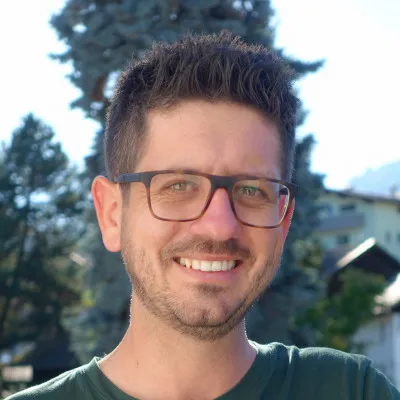
AV-Comparatives is an independent lab dedicated to testing security software, which regularly releases test results to the public. Every antivirus product in the test is required to demonstrate its protection capabilities in various test areas. When challenging the leading vendors of the industry with unfavourable results, you better have a robust methodology. In this talk we present insights to one of our testing frameworks, showcase some typical applications and give an outlook to the future of the project.
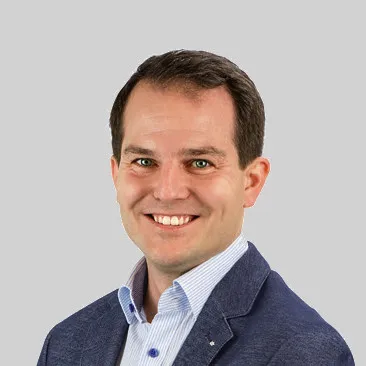
The aim of the event is to give you an understanding of recommendation systems and their benefits. First, we briefly present the basics of recommender systems. We then discuss use cases from practice to see how companies can benefit from predictive modeling.

With one security vulnerability chasing the next through tech news, we all know that security is an important part of software engineering. But how come I still see the same common, avoidable flaws in code audits? In this talk we’ll take a brief tour through some common vulnerabilities every developer should know about and discuss sustainable procedures to prevent them.
David Gstir is a security researcher and software engineer at sigma star gmbh with 15+ years of hands-on experience in designing, engineering and auditing software for various use cases. He obtained a master's degree in computer sciences from the University of Technology Graz, Austria where he specialized in IT security and cryptography.
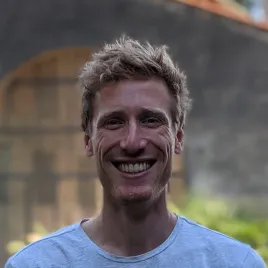
What could possibly go wrong if a startup scales from a handful of developers to a company with 30 people? All of a sudden I found myself in the position of handling 10 developers and had to care about more than just the next pull request.
Together we will take a look into the past and I will present some of our biggest challenges and personal learnings from growing and organizing a bunch of motivated developers without knowing where the journey will end. While theory explains you the easy way, practice always looks different.
And who the heck is responsible for buying coffee beans and milk??
Chris is a software engineer and development lead at Txture - a startup based in Innsbruck. Besides his work he is passionate about analyzing and visualizing outdoor sport activity data.
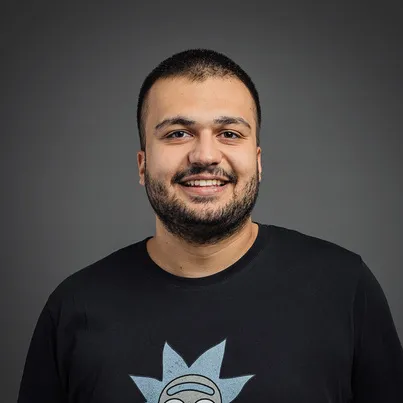
Explaining the journey of building a backend fitness platform from scratch as a distributed system on large scale, also covering a high-level architecture of the whole system. What's the story behind and how I got involved, what where the general requirements, the launch drama and handling traffic while working with one of the biggest fitness influencers.
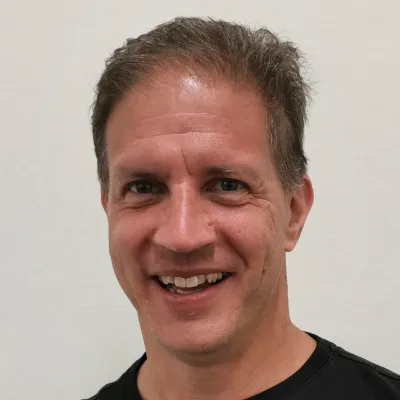
In this talk, we will explore agile methodologies and their impact on organizations. We will discuss agile structures, Scrum, stakeholder involvement, team dynamics, the 'Flowmaster' concept, working without hierarchies, and challenges in agile environments.
Register to our Engineering Kiosk Alps newsletter and receive emails about upcoming meetups.
No worries, we won't spam you and you can unsubscribe at any time.
August 7, 2025
September 11, 2025
October 9, 2025
November 6, 2025
December 4, 2025
Please register to the Newsletter to get notified when the talk dates get fixed, as those are preliminary.
Join our Engineering Kiosk Alps Discord channel in our Engineering Kiosk Community full of developers and tech enthusiasts.
Join Discord channel
Discord channel
The organizers of Engineering Kiosk Alps Innsbruck.
Feel free to drop us a message.